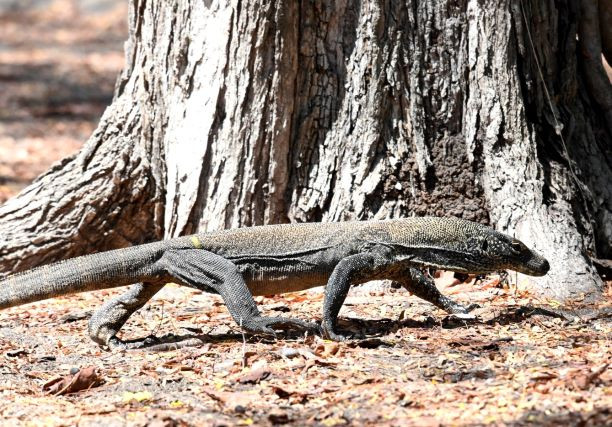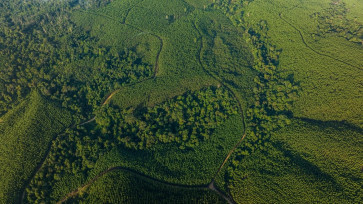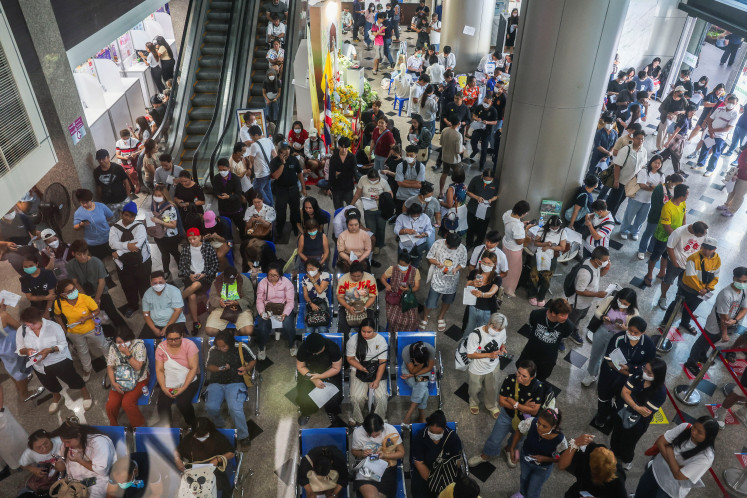Popular Reads
Top Results
Can't find what you're looking for?
View all search resultsPopular Reads
Top Results
Can't find what you're looking for?
View all search resultsAdopting sustainable tourism in Labuan Bajo
Implementing sustainable tourism, especially a strict policy on tourism carrying capacity, at super priority tourist destinations will protect and preserve their cultural and natural attractions for generations to come.
Change text size
Gift Premium Articles
to Anyone
M
anaging tourist destinations is not an easy job, particularly for long-term gains. Many tourist destinations across the world lose their unique appeal because of mismanagement. Without proper organization and management, destinations will only attract tourists for a short time before degrading (Butler, 1980). At this stage, both the natural and cultural attractions of the destination will have disappeared.
Governments and stakeholders thus need to work hand in hand in a spirit of collaboration spirit to adopt a sustainable tourism model that can save all destinations from decline, and at the same time preserve the local culture and enhance the per capita income of the local residents.
This approach should also be applied in managing the “super priority” tourist destination of Labuan Bajo in East Nusa Tenggara (NTT). In line with this, the government must institute a policy that limits the number of tourists to Labuan Bajo to a precise figure.
Labuan Bajo, like other tourist destinations, possesses a certain carrying capacity for the number of tourists it can accommodate without harming the local environment and ecosystem. Upholding the tourism carrying capacity is a key element to determining the sustainability of a particular destination. Governments and tourism stakeholders must therefore meet the tourism carrying capacity of Labuan Bajo in order to sustain and protect the Komodo dragon and its natural habitat.
A lack of consistency in meeting the tourism carrying capacity of Labuan Bajo will lead to the extinction of the Komodo dragon and the destruction of the local environment.
Fortunately, the Environment and Forestry Ministry has set the tourism carrying capacity for the super priority tourist destination. The ministry, through the Komodo National Park management, has also conducted a study on the tourism carrying capacity of Komodo Island and Padar Island, the native habitat of the Komodo dragon.
This expert study recommends that the ideal number of annual visitors to Komodo Island is 219,000 tourists and 39,420 tourists to Padar Island, or 100 tourists per visit. The government is to implement this recommendation next month. These figures are sufficient to prevent the deterioration of the Komodo dragon and its native ecosystem. This tourism carrying capacity is extremely critical in achieving quality tourism that can help the principles of sustainable tourism become a reality.
One of the principles of sustainable tourism is “save the planet”, and the way to do this while carrying out tourism activities is to meet the tourism carrying capacity of a particular destination. In this way, the Labuan Bajo tourism management can control tourist activities that can damage the environment.
For example, Bidadari Island and its surrounding environs, which are part of the Labuan Bajo tourist area, are covered in deep piles of plastic waste produced from the activities of both tourists and local residents. The beauty of this island and its seas, where tourists dive, are truly being threatened.
Unfortunately, littering occurs not only on Bidadari but also in most parts of Labuan Bajo. This proves that overcrowding will damage tourist destinations if the tourism carrying capacity is ignored.
Basically, this short description shows that mass tourism in Labuan Bajo has resulted in cumbersome and convoluted tourism management. Governments and stakeholders thus need to implement the niche tourism concept to save the super priority tourist destination from destruction.
In the niche tourism model, all tourism activities pay maximum attention to saving the environment and local culture, while benefiting the local people. In addition, this model supports the tourist activities of small groups (Richards, 2011).
This way, there is no excessive pressure on the environment or the local culture. Meanwhile, tourists also contribute to the local community because they will prefer to stay longer and spend their money generously. In other words, niche tourism promotes quality tourism.
However, Labuan Bajo needs to be managed better, not only in terms of preserving the environment but also protecting the local culture and providing benefits for the locals. This is complicated, since the development of this mega tourist resort is not based on the community-based tourism concept, which emphasizes the development of homestays that are owned and managed by local residents.
In fact, its hotels and restaurants are owned by big investors that offer greater benefits to them, while the local people only get the crumbs. This is clearly unfair, since the third principle of sustainable tourism, to provide maximal benefits to the local community, has not been implemented well.
Therefore, the tourism management of Labuan Bajo should be streamlined with other tourist destinations on Flores Island, and even the islands of Alor, Sumba and West Timor. This way, the mobility of tourists visiting this super priority can flow freely when visiting non-super priority destinations.
This way, tourists and money will also flow to the other destinations to directly benefit the local people. It is therefore right that the NTT provincial administration has been developing community-based tourism at other tourist destinations, such as Wol Wal in Alor, Mulut Seribu in Rote, Fatumnasi in Timor and Praimadita in Sumba. This is great, because the NTT administration is creating a balance between Labuan Bajo as a super priority destination and other tourist destinations in the region.
To sum up, sustainable tourism needs to be implemented in the super priority tourist destination of Labuan Bajo through the niche tourism model. If not, this amazing destination will decline in line with the deterioration of the Komodo dragon and the giant lizard’s native habitat.
For the sake of sustainable tourism, the niche tourism model should be applied to all tourist destinations across the nation to sustain their attraction from generation to generation.
***
The writer is former head of the East Nusa Tenggara Tourism Office and is currently an analyst at the NTT governor’s office. The views expressed are personal.










